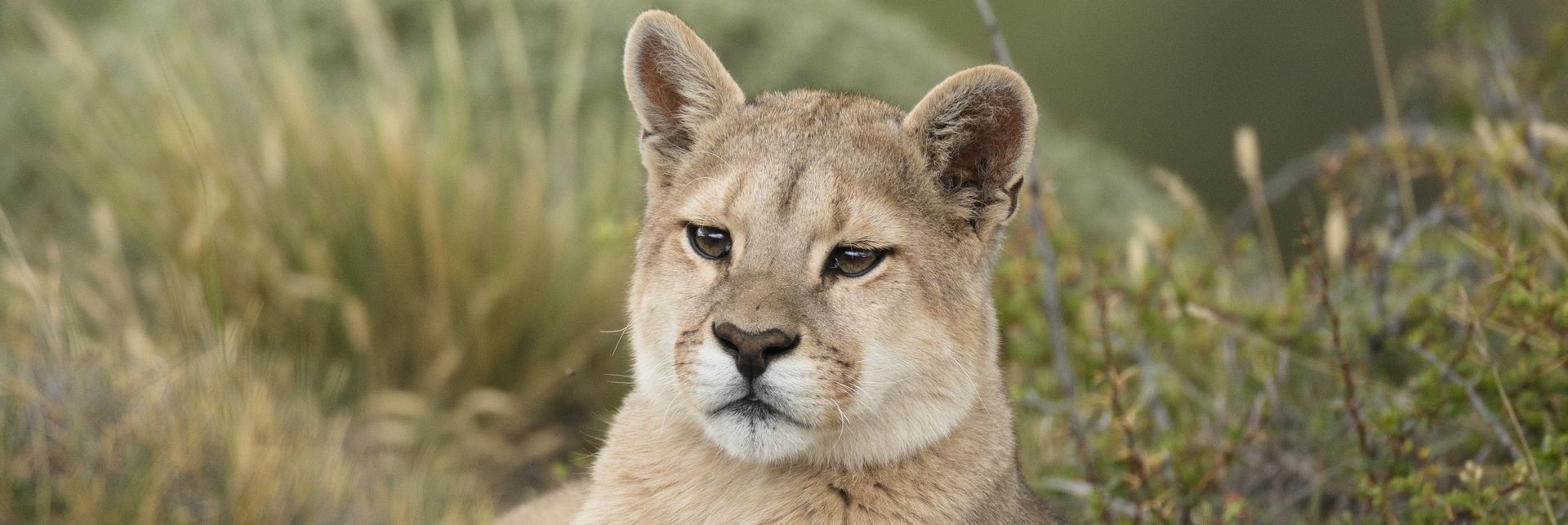
Patagonia National Park: The important role pumas play in the ecosystem
Pumas increase the flow of nutrients that enrich the soil and help vegetation to grow.
Studies by the Tompkins Chile Conservation Foundation and CONAF have discovered many pumas living in the Patagonia National Park, which play a fundamental role in the Patagonian ecosystem.
Pumas are predators that control the population of herbivores like guanacos and hares, in addition to other carnivores like foxes. It is also one of the main suppliers of carrion and food for condors and numerous other native species.
They have also been shown to be responsible for increasing the flow of nutrients that enrich soil and plant diversity, helping to balance vegetation growth in certain areas.
The Tompkins Conservation Foundation has managed to tag 33 pumas with GPS collars to monitor them and estimate their population density, movement patterns, territories, mortality factors and threats. A stable population of over 30 pumas has currently been detected, including adult males, juveniles and females with their offspring, meaning that the area has the appropriate conditions for their health and development.
In addition, the joint work by the Tompkins Conservation Foundation and CONAF has allowed the behavior of pumas in Patagonia to be closely monitored with the installation of 17 camera traps in the most-used trails, revealing their interaction with people.
Explora in the Patagonia National Park
It is worth mentioning that Explora has just opened a new lodge in this area, which it hopes travelers will be able to visit as of October 2021. The purpose of this new destination is to ensure the continuity of the Tompkins Conservation Foundation’s work in this area by adopting travel practices that promote exploration and knowledge of territories with the aim of ensuring their conservation for future generations.
It is fundamental to gain in-depth knowledge of these animals' behavior in Torres del Paine and Patagonia National Park, as they are places that receive many visitors. It is important to have the right tools and to be prepared for the creation of trails, paths, and encounters with these animals, but above all, to be able to preserve this place.
-
Studies by the Tompkins Chile Conservation Foundation and CONAF have discovered many pumas living in the Patagonia National Park, which play a fundamental role in the Patagonian ecosystem.
Pumas are predators that control the population of herbivores like guanacos and hares, in addition to other carnivores like foxes. It is also one of the main suppliers of carrion and food for condors and numerous other native species.
They have also been shown to be responsible for increasing the flow of nutrients that enrich soil and plant diversity, helping to balance vegetation growth in certain areas.
The Tompkins Conservation Foundation has managed to tag 33 pumas with GPS collars to monitor them and estimate their population density, movement patterns, territories, mortality factors and threats. A stable population of over 30 pumas has currently been detected, including adult males, juveniles and females with their offspring, meaning that the area has the appropriate conditions for their health and development.
In addition, the joint work by the Tompkins Conservation Foundation and CONAF has allowed the behavior of pumas in Patagonia to be closely monitored with the installation of 17 camera traps in the most-used trails, revealing their interaction with people.Explora in the Patagonia National Park
It is worth mentioning that Explora has just opened a new lodge in this area, which it hopes travelers will be able to visit as of October 2021. The purpose of this new destination is to ensure the continuity of the Tompkins Conservation Foundation’s work in this area by adopting travel practices that promote exploration and knowledge of territories with the aim of ensuring their conservation for future generations.
It is fundamental to gain in-depth knowledge of these animals' behavior in Torres del Paine and Patagonia National Park, as they are places that receive many visitors. It is important to have the right tools and to be prepared for the creation of trails, paths, and encounters with these animals, but above all, to be able to preserve this place.
Discover Our Destinations
Endless revelations and possibilities await



